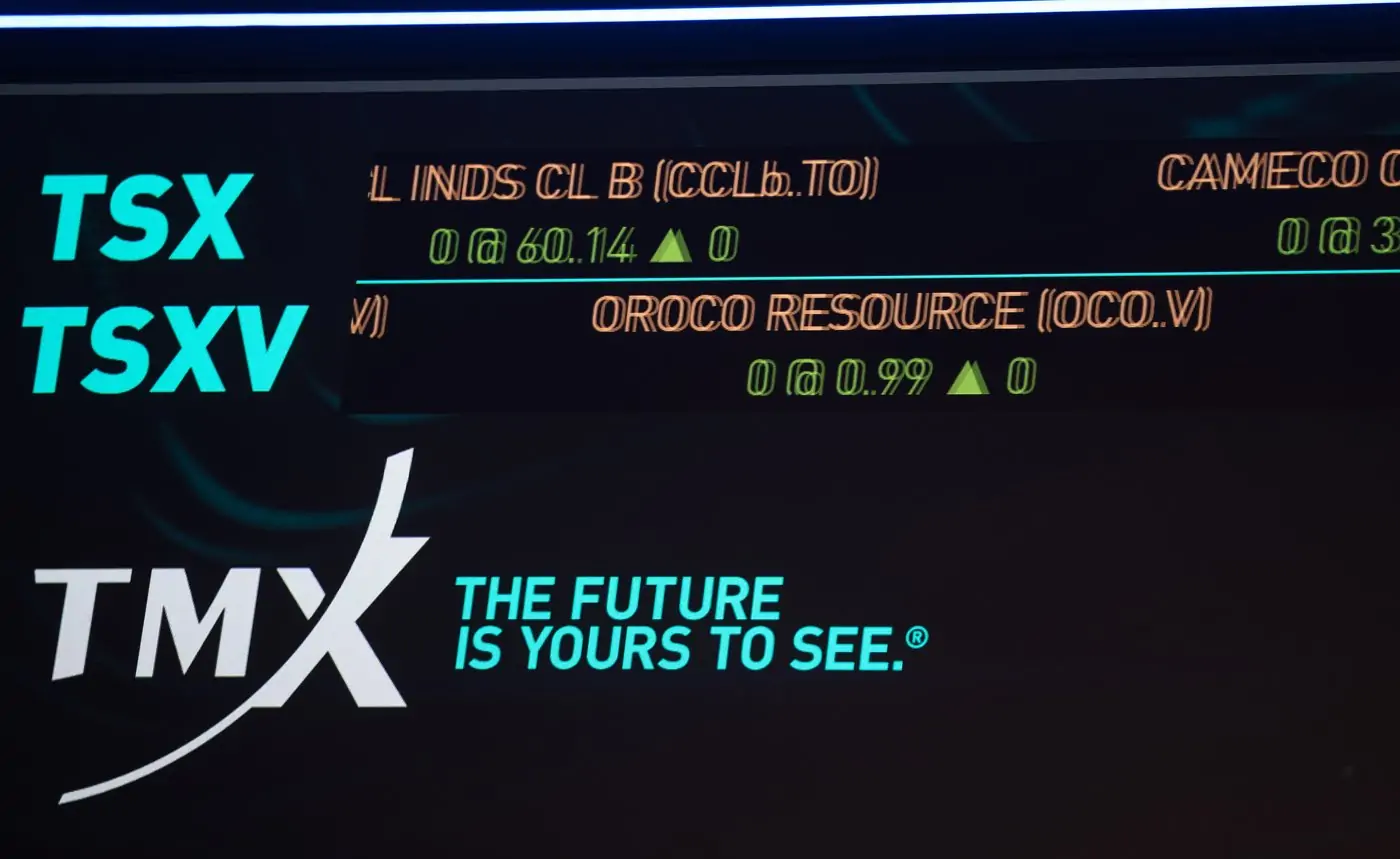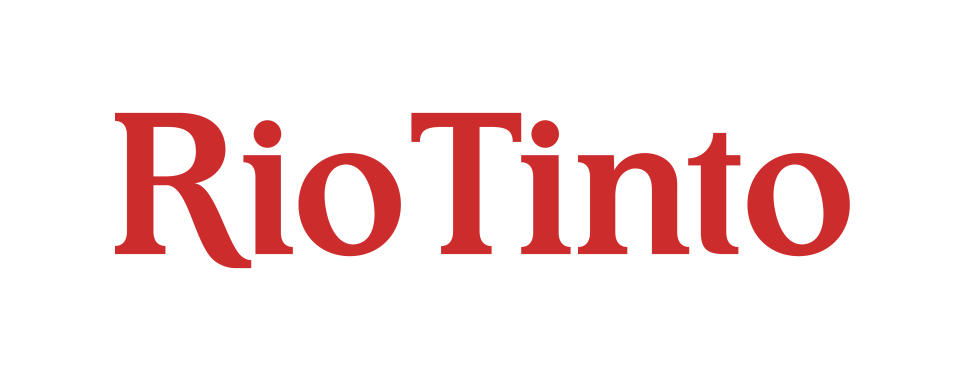Investment
Goldman’s three value investing ideas – and why you may not like them. Plus, dividend stock and ETF picks for 2024
A new report from Goldman Sachs highlights the difficulty of implementing value investing or contrarian investment strategies because the recommended trade ideas are frequently off-putting, even repulsive, to many investors at first glance.
David Kostin, Goldman Sachs’ chief U.S. equity strategist, used his Weekly Kickstart report to identify three pockets of value in an American market that is, on aggregate, very expensive relative to the historical average on most valuation measures.
The first idea is U.S. small cap stocks, an asset class that has been significantly more volatile than the S&P 500 in the past. Investors may not want to sign up for added volatility when the past 24 months has seen sharp ups and downs in equity markets, but Mr. Kostin estimates that attractive valuations in the small-cap space, combined with a healthy economic growth outlook, implies a Russell 2000 return of 15 per cent in the next 12 months. This is well above the 8 per cent Goldman Sachs forecasts for large caps.
The second recommendation for value investors is to own stocks with weak pricing power during periods of inflation. This seems nonsensical on its face – why wouldn’t investors prefer companies that can raise prices if their input costs rise? But Mr. Kostin notes that companies with weaker pricing power outperform during periods when profit margins are broadly improving, a trend they expect to happen this year as inflation pressures fade.
The third recommendation is to own consumer staples stocks over utilities. This is the most palatable of the ideas as both sectors exhibit low volatility under most market conditions. Goldman Sachs economists are forecasting rate cuts in mid-2024 and the strategist reports that U.S. staples have outperformed utilities 75 per cent of the time for the 12 months after the first cut occurs.
I’m not suggesting that Canadian investors implement these ideas – I’m certainly not in a hurry to increase portfolio volatility with small caps. They may, on the other hand, turn out to be effective ways to turn value investing practices into big returns. Either way, Mr. Kostin’s ideas for value investors provide an excellent example of the difficulty and counterintuitive nature that often accompanies value investing.
— Scott Barlow, Globe and Mail market strategist
This is the Globe Investor newsletter, published three times each week. If someone has forwarded this e-mail newsletter to you or you’re reading this on the web, you can sign up for the newsletter and others on our newsletter signup page.
The Rundown
Dividend stocks should recover this year. Here are some ways to profit
If all the portents are right, 2024 should be a good year for dividend stocks, says Gordon Pape. It’s about time. These normally dependable low-risk securities were savaged during the sharp run-up in interest rates as the central banks fired all their guns at the inflationary genie. So, how can you take advantage of this situation? Gordon Pape has some stock and ETF recommendations.
The hot ETF trend that isn’t your friend
Actively managed ETFs were so hot last year they took in larger inflows of money than passive index-tracking funds in many months of 2023. But before adapting to this new trend, Rob Carrick has some suggestions.
The Magnificent Seven are cheaper than you might think
The outlook for global stock markets in 2024 rests to a surprising extent on seven U.S.-based businesses. These companies – Alphabet Inc., Amazon.com Inc., Apple Inc., Meta Platforms Inc., Microsoft Corp., Nvidia Corp. and Tesla Inc. – are commonly known as the Magnificent Seven. Over the past decade, they have provided massive payoffs for investors. However, their success has reached the point where even optimists have to wonder how much juice can be left in the can. Here’s something for the bulls: the more columnist Ian McGugan looked at the Magnificent Seven, the more rationally priced they appear to be.
Red Sea tensions put focus on struggling U.S. energy stocks
A recent rally that has boosted nearly every corner of the U.S. stock market has left energy shares behind. Reuters reports that bullish investors are betting upcoming earnings reports and rising geopolitical tensions could spark a rebound for the struggling group.
Others (for subscribers)
The most oversold and overbought stocks on the TSX
Monday’s analyst upgrades and downgrades
Canadian ETFs: Investors warmed up to U.S. stocks in December; eight funds terminated
Ted Dixon: Fiera Capital insiders buy as distribution model takes shape
Globe Advisor
Understanding a company’s executive incentive compensation can highlight investment dangers
Are you a financial advisor? Register for Globe Advisor (www.globeadvisor.com) for free daily and weekly newsletters, in-depth industry coverage and analysis.
Ask Globe Investor
Question: Recently I liquidated all our managed portfolio (USD and CAD equities) with a Canadian bank and bought a self-managed CAD portfolio of ZEB and HCAL ETFs plus a couple of Canadian bank stocks. Am I too overweight on Canada bank stocks? I have 20 per cent in BCE stock as the only countervailing balance.
Am I risking all in Canada bank stocks? I got in at the right time at the end of October and the dividend yield is about 6.6 per cent. What would you suggest? – Partha T.
Answer: Let’s begin by stating the obvious. You are grossly overweighted in the banking sector. ZEB is the symbol for BMO Equal Weight Banks Index ETF while HCAL is Hamilton Enhanced Canadian Bank ETF. Plus, you have a couple of Canadian bank stocks and a 20 per cent position in BCE. No one would view this as a balanced portfolio!
Presumably, you did this deliberately, anticipating a turnaround in the banking sector. So far, it’s worked out well. As of the close on Dec. 27, the S&P/TSX Capped Financials Index was up 11.55 per cent for the fourth quarter. If we begin to see rate cuts in 2024, that should further strengthen the banks.
It seems a relatively safe bet. But if something goes wrong – such as a recession – you are very exposed. The answer is greater diversification, but presumably that’s what you had in the portfolio you liquidated. Are you looking for third party vindication of your moves? If so, you’ve come to the wrong place. I have always been a strong believer in the need for a diversified portfolio. It’s okay to overweight a sector – but not to put almost all your money there.
You asked what I would suggest. I would gradually start taking bank profits and redeploy the money to other sectors. This would include selling HCAL, which is underperforming ZEB by a considerable margin.
I would also reduce the 20 per cent position in BCE and add a bond ETF – either XBB (a universe bond fund from BlackRock) or XLB (a long-term bond fund from the same company). XBB is the more conservative.
In short, build a more broadly based portfolio. But since that’s what you had before, you may want to continue making big bets and accepting the accompanying risk.
–Gordon Pape (Send questions to gordonpape@hotmail.com and write Globe Question in the subject line.)
What’s up in the days ahead
Jennifer Dowty probes the mind of Benjamin Tal, the deputy chief economist of CIBC World Markets, to see what may be ahead for markets and the economy. Plus, David Berman will look at the latest investment prospects for Capital Power.

Investment
Crypto Market Bloodbath Amid Broader Economic Concerns
Investment
Investment regulator imposed $14M in enforcement penalties in latest fiscal year

TORONTO — Canada’s investment product regulator says it imposed more than $14 million in fines and other financial enforcements in its last fiscal year.
The Canadian Investment Regulatory Organization (CIRO) says the total also includes imposed costs and the forced return of ill-gotten profits.
The regulator says it also ordered suspensions and permanent prohibitions in a significant proportion of proceedings against individuals.
Enforcement efforts included a $2 million fine against Fortrade Canada for recommending a high-risk product to unsophisticated retail clients, and a $1.7 million fine and permanent ban on securities-related business against Paul Walker for a range of misconduct including soliciting more than $1.5 million in investments for an outside business activity.
CIRO was created at the start of 2023 through a combination of the Investment Industry Regulatory Organization of Canada and the Mutual Fund Dealers Association of Canada.
The new self-regulatory organization says it is focused on harmonizing its regulatory approach to create more consistency and timeliness with enforcement action.
This report by The Canadian Press was first published July 16, 2024.
The Canadian Press

Investment
Conditions on Simandou investment now satisfied

LONDON, July 15, 2024–(BUSINESS WIRE)–All conditions have now been satisfied for Rio Tinto’s investment to develop the Simandou high-grade iron ore deposit in Guinea, including the completion of necessary Guinean and Chinese regulatory approvals. The transaction is expected to complete during the week of 15 July 2024.
Along with the recent approval by the Board of Simfer1, this allows Simfer to invest in and fund its share of co-developed rail and port infrastructure being progressed in partnership with Winning Consortium Simandou2 (WCS), Baowu and the Republic of Guinea.
More than 600 kilometres of new multi-use trans-Guinean railway together with port facilities will allow the export of up to 120 million tonnes per year of mined iron ore by Simfer and WCS from their respective Simandou mining concessions in the southeast of the country3. Together, this will be the largest greenfield integrated mine and infrastructure investment in Africa.
Rio Tinto Executive Committee lead for Guinea and Copper Chief Executive Bold Baatar said: “We thank the Government of Guinea, Chinalco, Baowu and WCS for their partnership in reaching this milestone towards developing the world class Simandou project.
“Simandou will deliver a significant new source of high-grade iron ore that will strengthen Rio Tinto’s portfolio for the decarbonisation of the steel industry, along with trans-Guinean rail and port infrastructure that can make a significant contribution to the country’s economic development.”
Under the terms of the transaction, Simfer will acquire a participation in the WCS project companies constructing rail and port infrastructure, commit to perform a portion of the construction works itself and commit to funding its share of the overall co-developed infrastructure cost, in an aggregate amount of approximately $6.5 billion (Rio Tinto share approximately $3.5 billion)4.
Chalco Iron Ore Holdings Ltd (CIOH) has now paid its share of capital expenditures incurred or required by Simfer to progress critical works up to completion. A first payment of approximately $410 million, for expenditures until the end of 2023, was made on 28 June 2024, and a second payment of approximately $575 million, for 2024 expenditures, was made on 11 July 2024. These amounts settle all expenditures incurred up to date.
The co-developed infrastructure capacity and associated cost will be shared equally between Simfer, which will develop, own and operate a 60 million tonne per year5 mine in blocks 3 and 4 of the Simandou Project, and WCS, which is developing blocks 1 and 2.
Under the co-development arrangement, Simfer and WCS will deliver separate infrastructure scopes to leverage expertise. Simfer will construct the approximately 70 kilometre Simfer spur rail line and a 60 million tonne per year transhipment vessel (TSV) port, while WCS will construct the dual track approximately 536 kilometre main rail line, the approximately 16 kilometre WCS spur rail line and a 60 million tonne per year barge port.
Once complete, all co-developed infrastructure and rolling stock will be transferred to and operated by the Compagnie du Transguinéen (CTG) joint venture, in which Simfer and WCS each hold a 42.5% equity stake and the Guinean State a 15% equity stake6.
First production from the Simfer mine is expected in 2025, ramping up over 30 months to an annualised capacity of 60 million tonnes per year5 (27 million tonnes Rio Tinto share). The mine will initially deliver a single fines product before transitioning to a dual fines product of blast furnace and direct reduction ready ore.
Simfer’s capital funding requirement for the Simandou project as a whole is estimated to be approximately $11.6 billion, of which Rio Tinto’s share is approximately $6.2 billion, broken down as follows.
| US dollars in billions (nominal terms) | Simfer
capex |
Rio Tinto share |
|
| Mine and TSVs, owned and operated by Simfer | |||
| Development of an initial 60Mt/a mine at Simandou South (blocks 3 & 4), to be constructed by Simfer | $5.1 | $2.7 | |
| Co-developed infrastructure, owned and operated by CTG once complete | |||
| Simfer scope (funded 100% by Simfer during construction)
Rail: a 70 km rail-spur from Simfer mine to the mainline, including rolling stock |
$3.5 | $1.9 | |
| WCS scope (funded 34% by Simfer during construction)
Port and rail infrastructure including an approximately 552 km trans-Guinean heavy haul rail system, comprised of a 536 km mainline and a 16 km WCS rail spur |
$3.0 | $1.6 | |
| Total capital expenditure (nominal terms) | $11.6 | $6.27 | |
Rio Tinto’s share of expected capital investment remaining to be spent from 1 January 2024 is to be $5.7 billion. Rio Tinto’s expected funding requirements for 2024 and 2025 are included in its share of capital investment guidance for this period, with project funding expected to extend beyond this timeframe.
Further details on the Simandou project can be found in the 2023 Investor Seminar presentation at https://www.riotinto.com/en/invest/investor-seminars.
As Chinalco, Baowu, China Rail Construction Corporation and China Harbour Engineering Company are Chinese state-owned entities, and given Chinalco indirectly holds 11.2% of shares in the Rio Tinto Group, they, and WCS, may be considered to be associates of a related party of Rio Tinto for the purpose of the UK Listing Rules. Rio Tinto’s funding commitment pursuant to the infrastructure co-development arrangement (Rio Tinto share $3.5bn) is a smaller related party transaction for the purposes of Listing Rule 11.1.10R and this announcement is, therefore, made in accordance with Listing Rule 11.1.10R(2)(c).
| ___________________________ |
| 1 Approval has been granted by the Board of Simfer Jersey Limited, a joint venture between the Rio Tinto Group (53%) and Chalco Iron Ore Holdings Ltd (CIOH) (47%), a Chinalco-led joint venture of leading Chinese SOEs (Chinalco (75%), Baowu (20%), China Rail Construction Corporation (2.5%) and China Harbour Engineering Company (2.5%)). Simfer Infraco Guinée S.A.U. will deliver Simfer Jersey’s scope of the co-developed rail and port infrastructure, and is, on the date of this notice, a wholly-owned indirect subsidiary of Simfer Jersey Limited, but will be co-owned by the Guinean State (15%) after closing of the co-development arrangements. Simfer S.A. is the holder of the mining concession covering Simandou Blocks 3 & 4, and is owned by the Guinean State (15%) and Simfer Jersey Limited (85%). |
| 2 WCS is the holder of Simandou North Blocks 1 & 2 (with the Government of Guinea holding a 15% interest in the mining vehicle and WCS holding 85%) and associated infrastructure. WCS was originally held by WCS Holdings, a consortium of Singaporean company, Winning International Group (50%) and Weiqiao Aluminium (part of the China Hongqiao Group) (50%). On 19 June 2024, Baowu Resources completed the acquisition of a 49% share of WCS mine and infrastructure projects with WCS Holdings holding the remaining 51%. In the case of the mine, Baowu also has an option to increase to 51% during operations. After Closing, Simfer will hold 34% of the shares in the WCS infrastructure entities during construction with WCS holding the remaining 66%. |
| 3 WCS holds the mining concession for Blocks 1 and 2, while Simfer S.A. holds the mining concession for blocks 3 and 4. Simfer and WCS will independently develop their mines. |
| 4 A true-up mechanism will apply between Simfer and WCS to equalise most of their costs of constructing the co-developed rail and port infrastructure. The figures shown here are pre-equalisation. |
| 5 The estimated annualised capacity of approximately 60 million dry tonnes per annum iron ore for the Simandou life of mine schedule was previously reported in a release to the Australian Securities Exchange dated 6 December 2023 titled “Simandou iron ore project update“. Rio Tinto confirms that all material assumptions underpinning that production target continue to apply and have not materially changed. |
| 6 Ownership of the rail and port infrastructure will transfer from CTG to the Guinean State after a 35 year Operations Period, with Simfer retaining access rights on a non-discriminatory basis and at least equivalent to all Third Party Users. |
| 7 By the end of 2023, Rio Tinto spent $0.5 billion (Rio Tinto share) to progress critical path works. Rio Tinto’s share of expected capital investment remaining to be spent from 1 January 2024 was $5.7 billion. |
This announcement is authorised for release to the market by Andy Hodges, Rio Tinto’s Group Company Secretary.
View source version on businesswire.com: https://www.businesswire.com/news/home/20240621382292/en/
Contacts
Please direct all enquiries to media.enquiries@riotinto.com
Media Relations,
United Kingdom
Matthew Klar
M +44 7796 630 637
David Outhwaite
M +44 7787 597 493
Media Relations,
Australia
Matt Chambers
M +61 433 525 739
Jesse Riseborough
M +61 436 653 412
Alyesha Anderson
M +61 434 868 118
Michelle Lee
M +61 458 609 322
Media Relations,
Americas
Simon Letendre
M +1 514 796 4973
Malika Cherry
M +1 418 592 7293
Vanessa Damha
M +1 514 715 2152
Investor Relations,
United Kingdom
David Ovington
M +44 7920 010 978
Laura Brooks
M +44 7826 942 797
Investor Relations,
Australia
Tom Gallop
M +61 439 353 948
Amar Jambaa
M +61 472 865 948
Rio Tinto plc
6 St James’s Square
London SW1Y 4AD
United Kingdom
T +44 20 7781 2000
Registered in England
No. 719885
Rio Tinto Limited
Level 43, 120 Collins Street
Melbourne 3000
Australia
T +61 3 9283 3333
Registered in Australia
ABN 96 004 458 404
Category: Simandou

-

 News20 hours ago
News20 hours agoCompanies take stock of rail shutdown’s hit to economy — and bottom lines
-

 News13 hours ago
News13 hours agoFeds identify 56 government properties for conversion to affordable housing
-

 News20 hours ago
News20 hours agoIsrael and Hezbollah trade heavy fire before pulling back, jolting a region braced for war
-

 News13 hours ago
News13 hours agoMontreal commuter lines halted by rail shutdown to run again starting Monday: Exo
-

 News20 hours ago
News20 hours agoFeds to take steps on housing promises ahead of cabinet retreat in Halifax
-

 News14 hours ago
News14 hours agoDid Taylor Swift create a new era for food bank donations?
-

 News15 hours ago
News15 hours agoBabe Ruth’s ‘called shot’ jersey sells at auction for over $24 million
-

 News21 hours ago
News21 hours agoPeople gather in New Brunswick conference to share Bigfoot stories





















